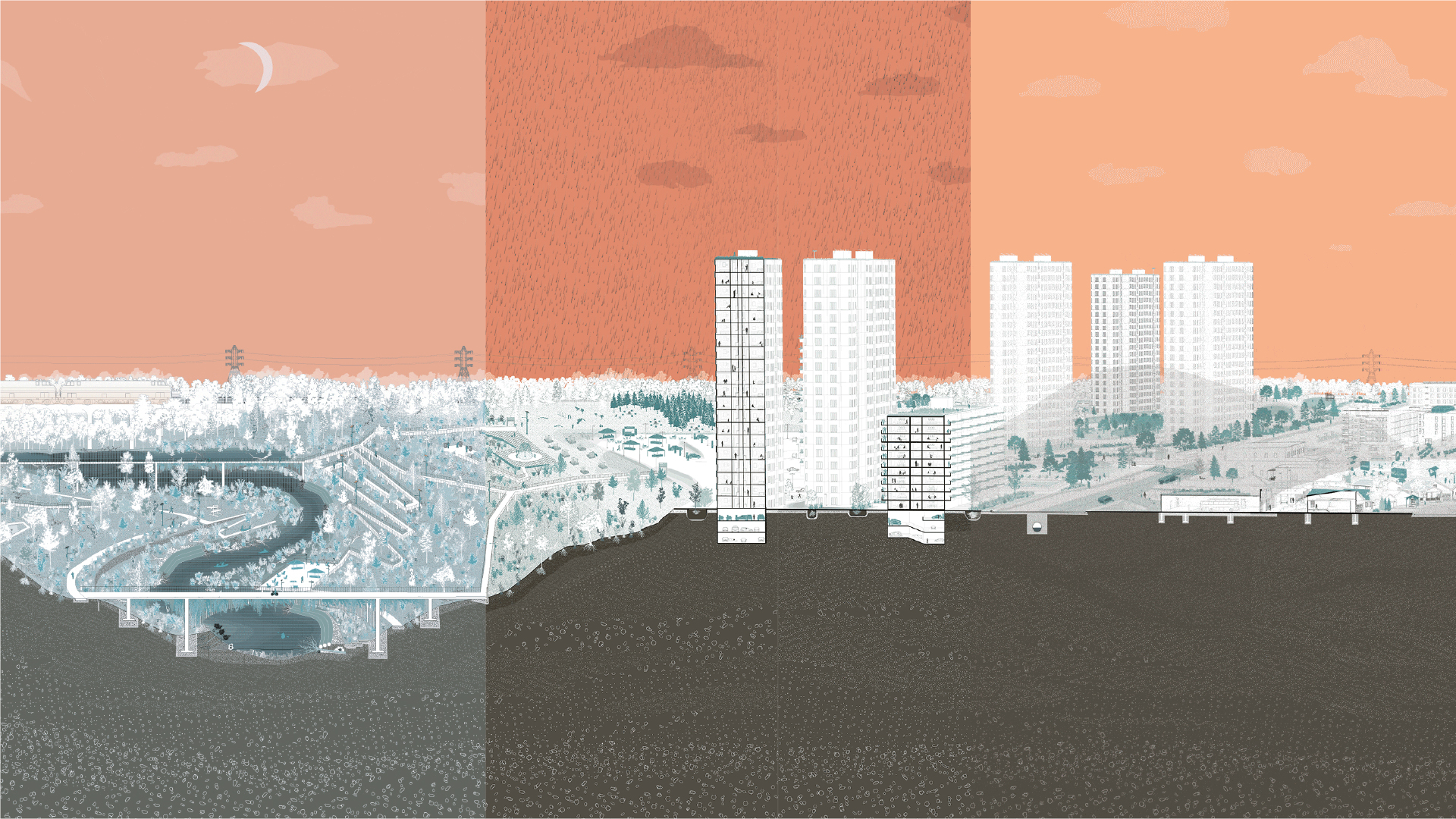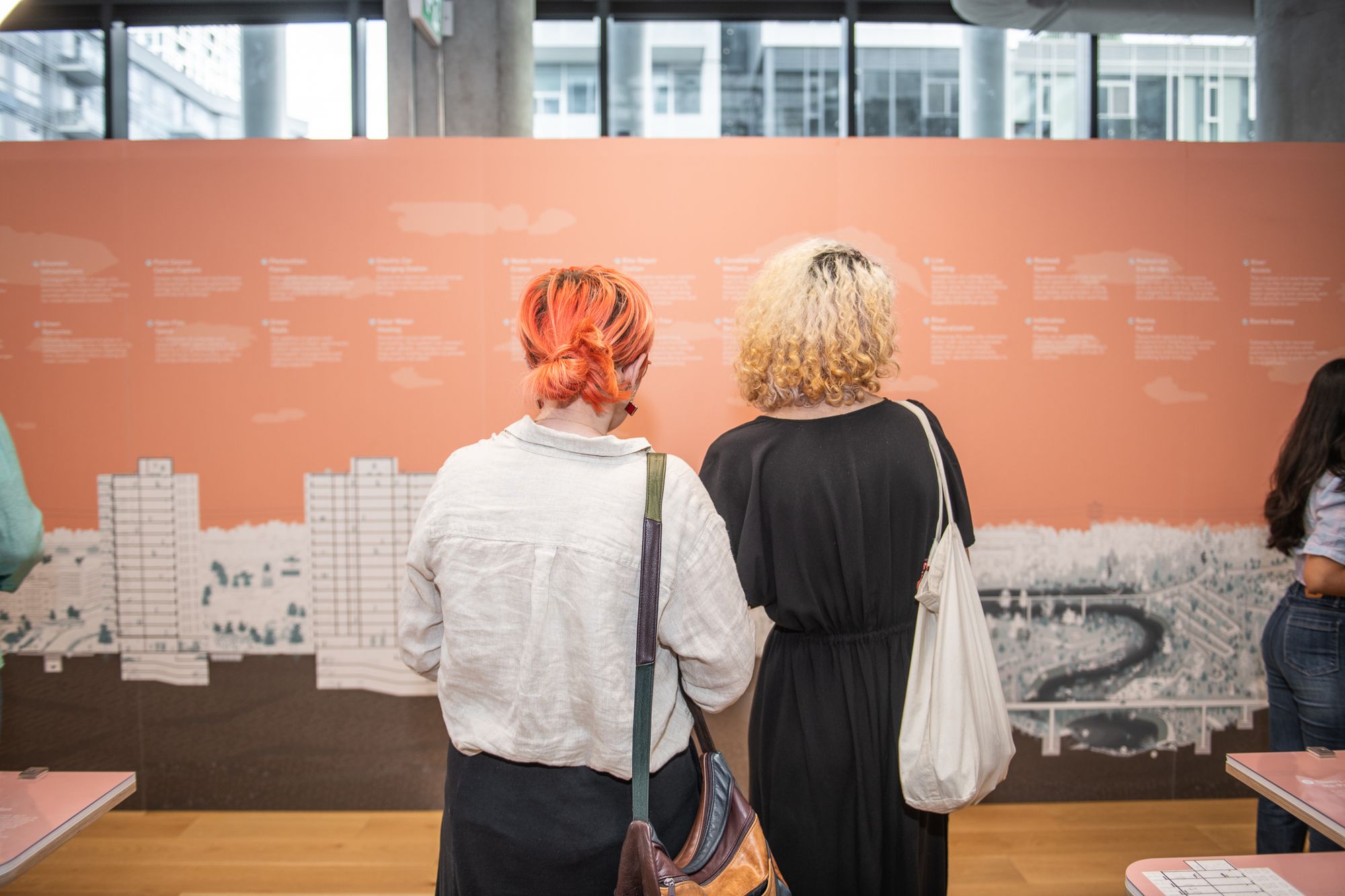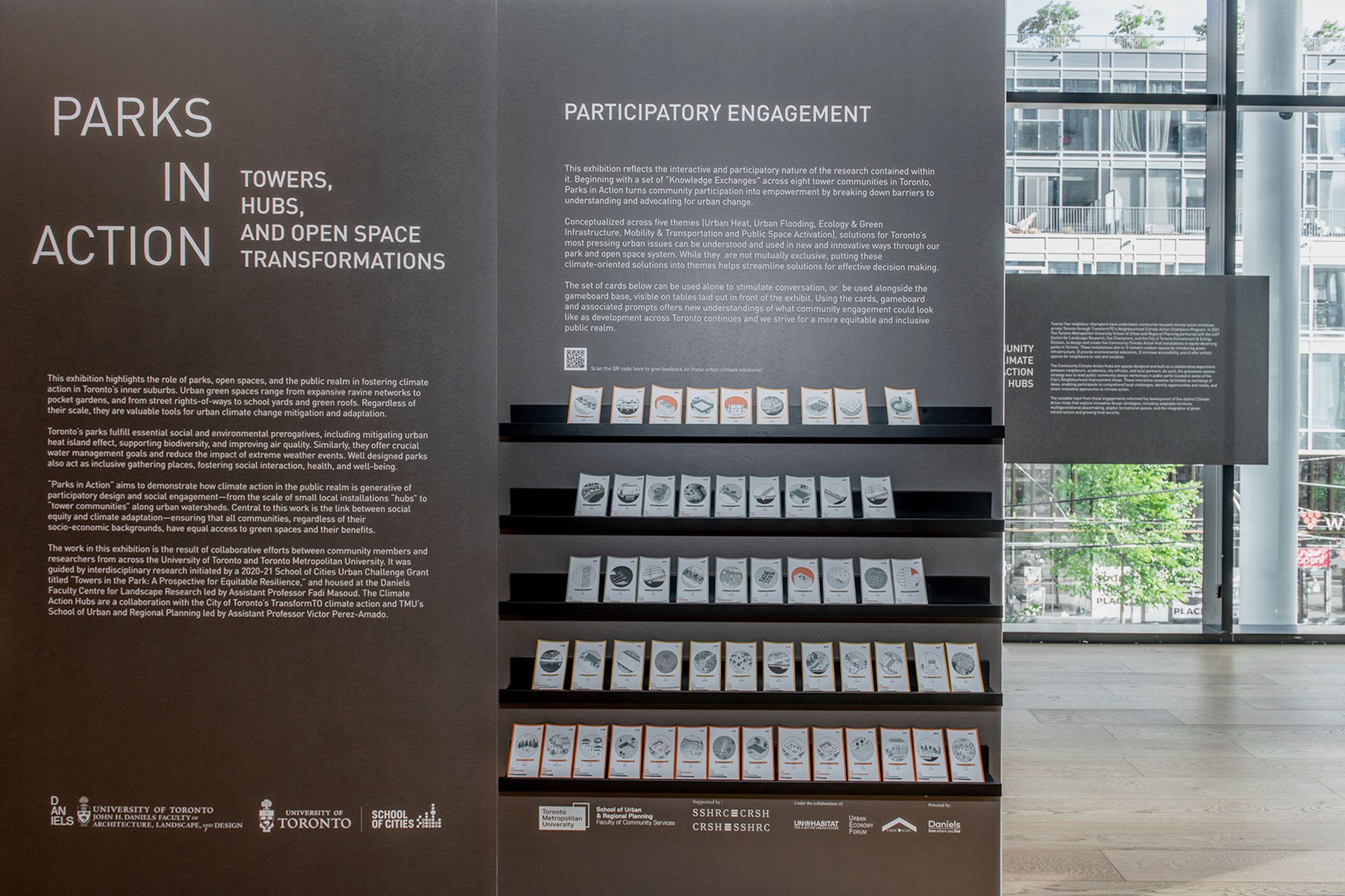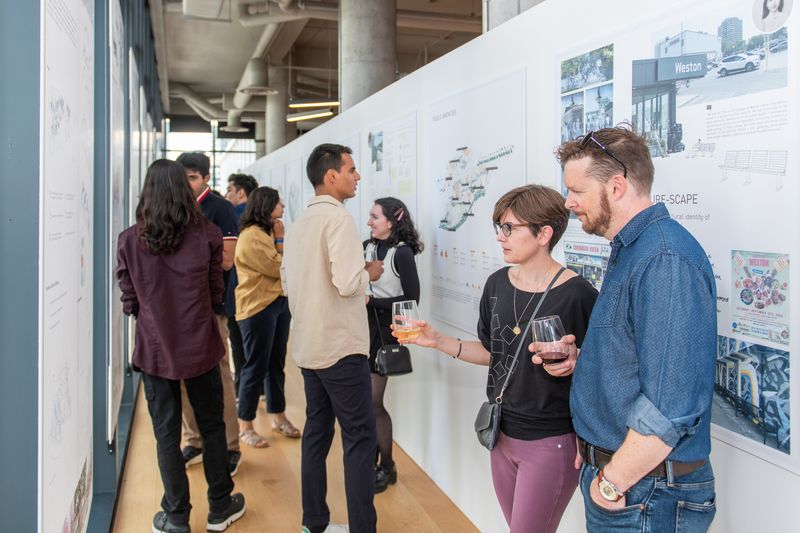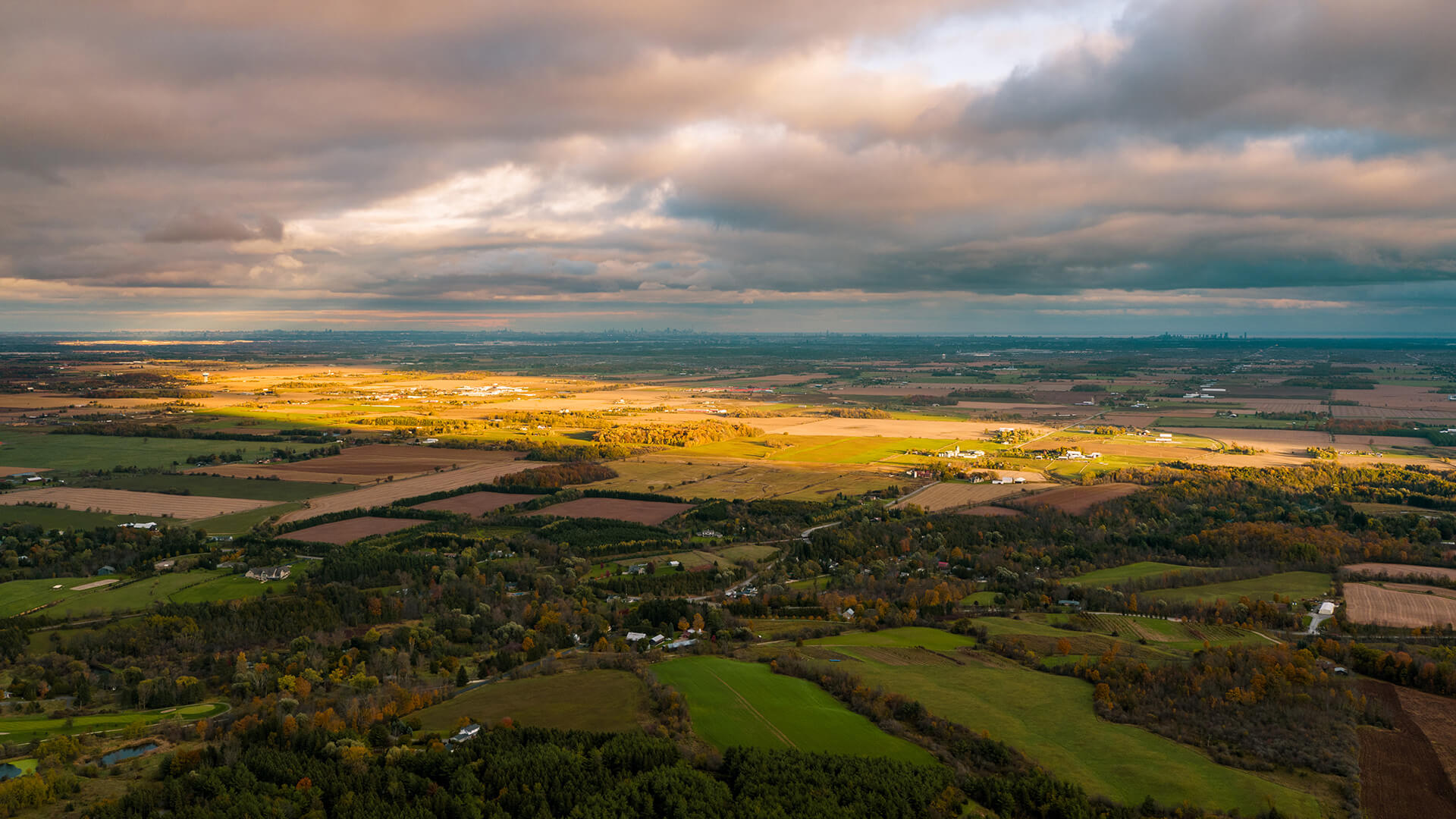
03.04.24 - MLA Design Research Studio on Hart House Farm featured in UNESCO NEBN Report
Hart House Farm is a 150-acre property in Caledon, Ontario, located within the Niagara Escarpment Biosphere buffer zone, in the territory of the Mississaugas of the Credit First Nation. Managed by the University of Toronto’s Hart House for a range of outdoor, co-curricular opportunities, this site, and its layered context, was the setting for last term’s Advanced Design Research Studio (LAN3016) led by Associate Professor Liat Margolis.
In the wake of U of T’s Truth and Reconciliation report, Answering the Call: Wecheehetowin, Hart House wanted to consider how the Farm might contribute to realizing the commitments contained in the document. Master of Landscape Architecture (MLA) students subsequently researched the environmental and Indigenous-settler history of the Farm to create design proposals and forest management plans that explore its future as a locus for Indigenous-led land-based teaching, research and guardianship training community-engaged programs.
“The goals of this studio,” says Margolis, “were to develop an understanding of the environmental history of the land under a decolonization lens, create a framework of understanding of the Farm as part of a larger landscape mosaic and network of stewardship, and develop a set of values, designs, management protocols and partnerships as part of Hart House’s forthcoming strategic plan.”
In addition, the studio has been featured in the Niagara Escarpment Biosphere Network (NEBN) report for the Canadian Commission for UNESCO and the International Coordinating Council of the MAB (Man and Biosphere) Programme.
“This studio led by Liat Margolis is a prime example,” says the report, “of how experiential education within the landscapes of the Biosphere can profoundly shape the learning of the students and provide them with genuine connections to the land and partners within it.”
MLA students in the Hart House Farm Studio on a site visit during the Fall 2023 semester. The dolomite rock formations that span the site consist of fissures, caves and dramatic escarpment cliffs.
The design proposals presented by the MLA students exhibited a possible future for the Farm based on an interdisciplinary and integrated lens of Indigenous-led and community-centered land relations, landscape architecture, and ecological conservation.
Adrienne Mariano and Jessica Palmer, two students who participated in the studio, shared their perspectives in the report:
What did it mean for you to have this experiential learning on the land at Hart House Farms?
Adrienne Mariano and Jessica Palmer: The opportunity for experiential learning meant that our conversations with treaty rights holders, organizations working in the region, and community members were able to be framed within the context of colonial land-based practices that were highly specific to observations on the property at Hart House Farm. Having the chance to frame these conversations with experiences such as walks, fieldwork, and even pond swimming meant that we were actively able to form deeper relationships with the land as we explored it from an academic lens.
What did it mean for you to work with all our studio contributors at the farm and throughout the term?
Mariano and Palmer: Getting all these people together for walks and presentations meant that they were also a part of this learning process, and were encouraged to reflect on how their ongoing work contributes to or works against decolonial land views and practices. Getting these conversations out of the classroom and into the world with working professionals was important because, as students, we often are encouraged to think as changemakers but it takes time to become established in our fields, whereas working professionals can make changes in more immediate ways.

Mariano and Palmer's project focuses on the former quarried areas of the Bruce Trail Conservacy-owned Quarryside Property, which has turned into a series of lush successional wetlands at the base of the Niagara Escarpment.
What does it mean for you to have explored this site from a decolonial lens?
Mariano and Palmer: Exploring Hart House Farms from a decolonial lens allowed us to think more critically about landforms and how they are shaped on a time scale that is so large it is almost incomprehensible to humans. This thinking helps to frame our relationship with the natural world and foster deep respect for the time it takes for cliff faces, rocks, and fossils to form. Comparing these ancient geological forms to the impacts caused by industrial quarrying in the region allowed us to question the impacts of ongoing extractive practices along the Niagara Escarpment and how the University of Toronto can use Hart House Farms to advocate for its protection.

Their project allows Hart House Farm visitors and Bruce Trail hikers the opportunity to experience lush novel habitats in their evolutionary stage, as they continue to mature and expand over time. A system of boardwalks spans slag piles and wetlands, allowing visitors to interact with a landscape that extraction practices have dramatically altered, and through subtle didactic panels at rest points.
What are you excited about / what do you hope to see in the near future, or in the long term?
Mariano and Palmer: In the near future, we hope to see the non-Indigenous partner organizations (especially those who work in conservation) work more actively to support Indigenous-led conservation practices and co-governance models. We are excited about the response from the team at Hart House and look forward to seeing how they incorporate and run with our research in making concrete changes at the property both immediately and in the long term.
Using a series of interconnected trails and boardwalks, their design focuses on bringing people to the areas of former quarrying to learn about the impacts of extraction on these delicate ecosystems.
The principles and recommendations explored at the final review of the studio by the MLA students, the partners and rights holders, and Hart House Farm staff will be summarized and integrated in the strategic planning for the Farm.
The Hart House Farm studio was supported by and co-created in partnership with University of Toronto Hart House, Waakbiness Institute for Indigenous Health, Mississaugas of the Credit First Nation (MCFN), Niagara Escarpment Commission, Niagara Escarpment UNSECO Biosphere Network, Credit Valley Conservation, Bruce Trail Conservancy and Town of Caledon Heritage Department.






